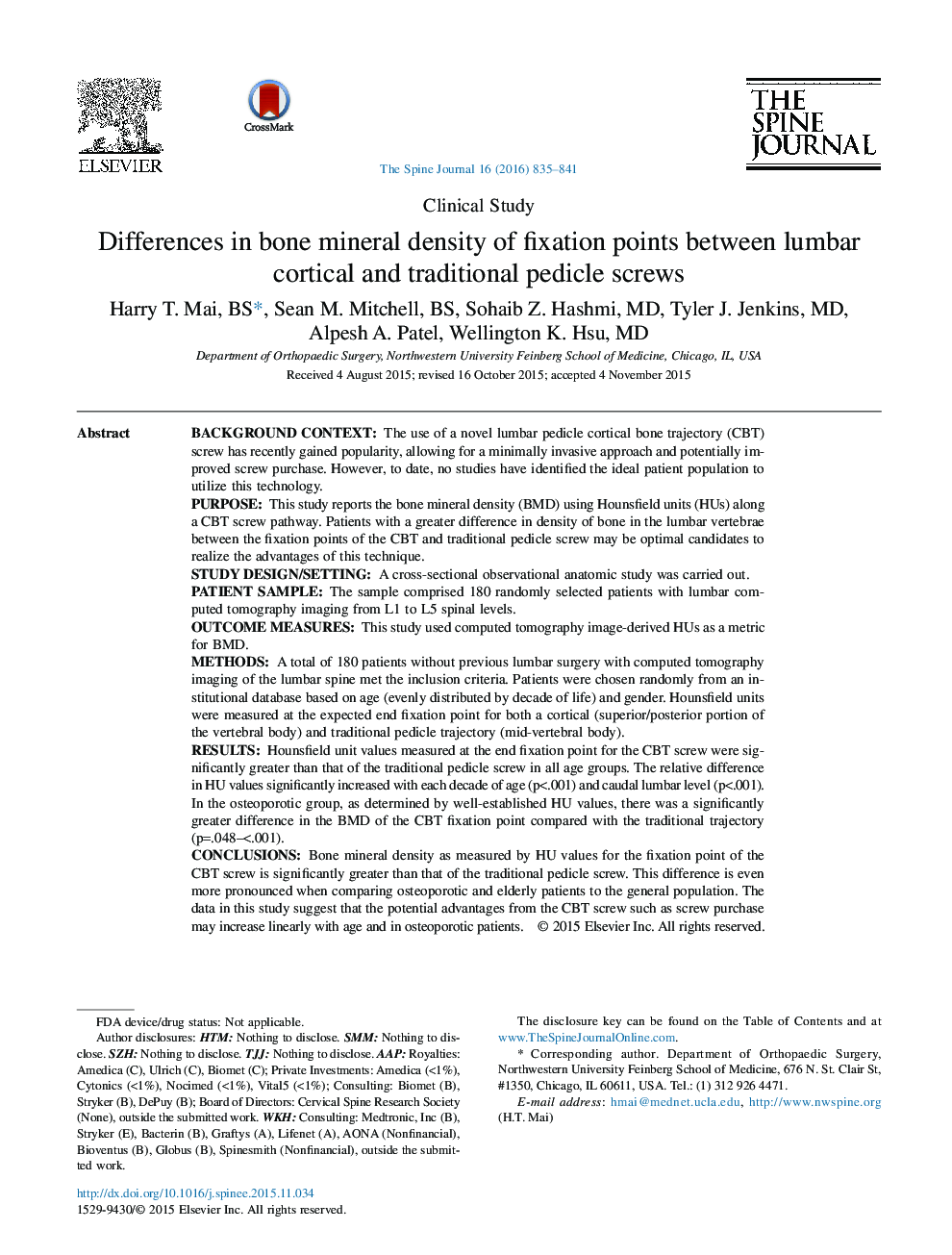| کد مقاله | کد نشریه | سال انتشار | مقاله انگلیسی | نسخه تمام متن |
|---|---|---|---|---|
| 4096012 | 1268550 | 2016 | 7 صفحه PDF | دانلود رایگان |
Background ContextThe use of a novel lumbar pedicle cortical bone trajectory (CBT) screw has recently gained popularity, allowing for a minimally invasive approach and potentially improved screw purchase. However, to date, no studies have identified the ideal patient population to utilize this technology.PurposeThis study reports the bone mineral density (BMD) using Hounsfield units (HUs) along a CBT screw pathway. Patients with a greater difference in density of bone in the lumbar vertebrae between the fixation points of the CBT and traditional pedicle screw may be optimal candidates to realize the advantages of this technique.Study Design/SettingA cross-sectional observational anatomic study was carried out.Patient SampleThe sample comprised 180 randomly selected patients with lumbar computed tomography imaging from L1 to L5 spinal levels.Outcome MeasuresThis study used computed tomography image-derived HUs as a metric for BMD.MethodsA total of 180 patients without previous lumbar surgery with computed tomography imaging of the lumbar spine met the inclusion criteria. Patients were chosen randomly from an institutional database based on age (evenly distributed by decade of life) and gender. Hounsfield units were measured at the expected end fixation point for both a cortical (superior/posterior portion of the vertebral body) and traditional pedicle trajectory (mid-vertebral body).ResultsHounsfield unit values measured at the end fixation point for the CBT screw were significantly greater than that of the traditional pedicle screw in all age groups. The relative difference in HU values significantly increased with each decade of age (p<.001) and caudal lumbar level (p<.001). In the osteoporotic group, as determined by well-established HU values, there was a significantly greater difference in the BMD of the CBT fixation point compared with the traditional trajectory (p=.048–<.001).ConclusionsBone mineral density as measured by HU values for the fixation point of the CBT screw is significantly greater than that of the traditional pedicle screw. This difference is even more pronounced when comparing osteoporotic and elderly patients to the general population. The data in this study suggest that the potential advantages from the CBT screw such as screw purchase may increase linearly with age and in osteoporotic patients.
Journal: The Spine Journal - Volume 16, Issue 7, July 2016, Pages 835–841
